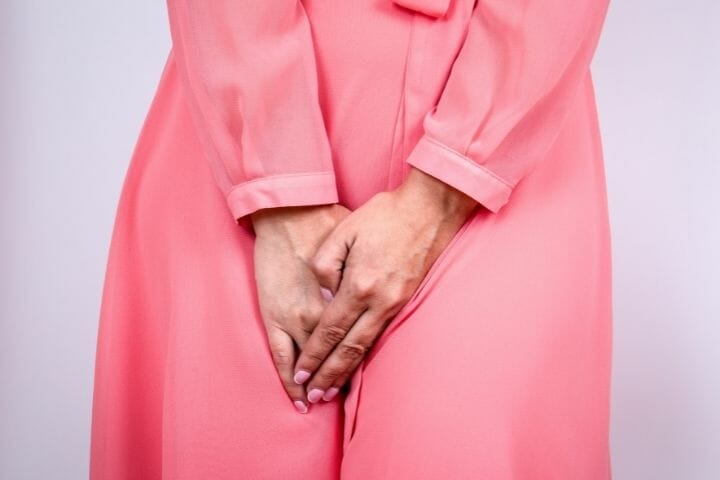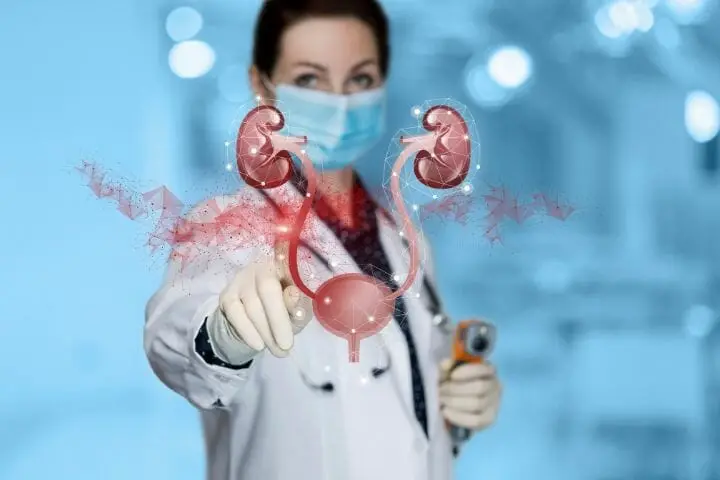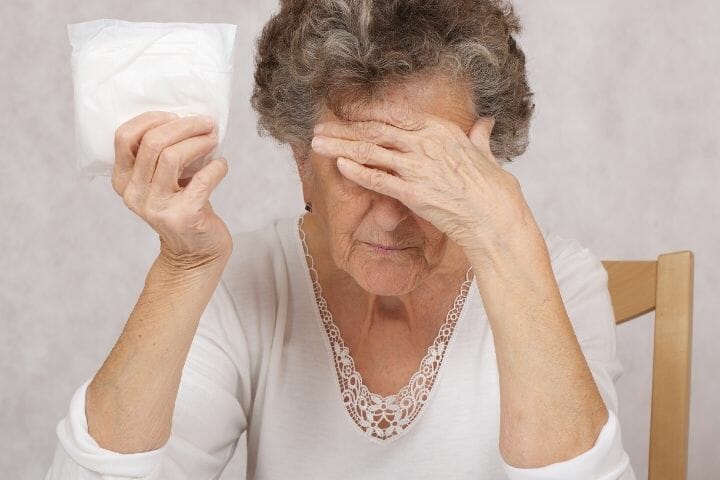What is functional urinary incontinence? What are its causes and symptoms, risk factors, etc.? In this article, we examine the answers to all of these questions.
Contents
An inability to control one’s bladder, which results in accidental urination, is called urinary incontinence. In many circumstances, incontinence results from a medical condition affecting the bladder’s ability to function correctly.
Urinary incontinence affects between 25 and 33 percent of the population of the United States, as per the Urology Care Foundation. It affects women more than males. Incontinence is also more common when individuals become older or go through physical changes, including pregnancy and childbirth, among other things.

Functional Urinary Incontinence is different in causes but results in the same problem. Function UI happens when, because of a particular medical or environmental condition, a person cannot reach the bathroom on time even though they are aware and capable of urinating.
Some examples of Functional Urinary incontinence include people with MS or Arthritis who find it difficult to walk quickly enough to the bathroom or patients with dementia who tend to get confused about where the bathroom is and what they need to do.
Risk Factors for Functional Incontinence
Individuals at risk of this sort of incontinence are most likely suffering from some other medical problem. Dementia-related disorders and ailments that limit movement and skill may lead to functional incontinence in older persons.
The symptoms of functional incontinence are unique to each individual. If, for example, a person with arthritis cannot swiftly unbutton or unzip their garments, they may inadvertently urinate due to their inability to do so. If a person has impaired vision, they may not get to the restroom on time.
Diagnosing Functional Incontinence
The first step in controlling incontinence is to seek an examination from a medical practitioner. A medical practitioner will review your medical history, along with any present medical issues you may be experiencing and any drugs you are taking. They will very certainly inquire about your overall health as well. The following are examples of topics:
- Dietary
- Hydration
- Physical activity habits
- Overall mobility

You will probably be subjected to several standard tests. Simple tasks such as shutting your mouth and nose while taking a deep breath could be requested by your doctor. In addition, they may do a urinalysis, which experts use to examine urine for abnormalities.
To have a better understanding of your incontinence, your doctor may prescribe further tests, such as the following:
- Urine test: An incontinence urine test is performed by your doctor, who takes a sampling of your urine and submits it to a laboratory to look for symptoms of infection or other conditions that may be causing your incontinence.
- Ultrasound: To rule out abnormalities in the bladder, kidneys, and urethra, your doctor will use an ultrasound wand to image the organs in question.
- Cystoscopy: During this procedure, your doctor inserts a cystoscope, which is a tubular structure with a tiny camera mounted to it, inside your urethra and bladder to look for symptoms of damage.
- Urodynamic study: During this procedure, your doctor inserts a catheter inside your bladder and flushes it with water to determine how much liquid it can retain.
In addition, a doctor may elect to do tests that are not as prevalent. Their examination may include testing your pelvic floor strength, bladder strength, and urinary tract problems.
You may also be required to maintain a journal that includes the following information:
- consumption of food
- consumption of water
- bowel and urinary motions
- when incontinence is a problem
When Should You See the Doctor?
Urine is stored in the bladder – These bladder muscles contract and force fluid out of the urethra. The muscles of the urethra relax, allowing urine to pass out. Urine can leak if the muscles relax suddenly or do not operate as they ought to.
It is understandable if you are uncomfortable addressing incontinence with your doctor. However, if you have functional incontinence regularly or if it negatively impacts your life quality, it’s crucial to get medical attention since functional incontinence may cause:
- To minimize your activities and social connections as a result
- As older persons hurry to the bathroom, they increase their risk of falling
- The presence of an underlying illness that is more severe

Prevention and Treatment
Functional incontinence and the factors that rise to it cannot be prevented. On the other hand, managing the underlying problem may provide some alleviation.
Incontinence linked to a long-term ailment may need improved symptom management as a therapy option. A wide range of substances may help bladder control.
Exercise, for example, is a good idea. Taking a walk for 40 minutes every day should be a daily goal for most people.
Make a beeline for the restroom as soon as you notice a need to relieve yourself. If you’re suffering from cognitive difficulties, you should also attempt to go to the restroom regularly.
Those who have trouble seeing the toilet might benefit from placing additional lighting in the room and keeping a flashlight in their pocket or purse.
It’s possible that doing pelvic floor exercises can benefit those who have trouble going to the restroom on time, too. Limiting your alcoholic and caffeinated beverages intake might also help you use the restroom less often.
Different Categories of Incontinence
There are five different categories of incontinence. The following are a few examples:
1. Stress incontinence
Stress incontinence occurs when urination comes out when you run, sneeze, or laugh. A person’s bladder is placed under stress when engaging in physical activity that raises their stomach pressure. The term “stress” refers to the physical strain that occurs due to the leaking. The illness has nothing to do with emotions, even though it is upsetting emotionally. In this case, urine seeps out only in small amounts, often.
According to some experts, stress incontinence is more likely in females who have delivered birth vaginally. This is because the muscles and nerves in the pelvic floor have been strained and may have been injured during childbirth. In general, incontinence is more likely to occur with prolonged labor, an older mother, and more deliveries.

2. Urge incontinence
Your incontinence may be caused by an overactive bladder, or “urge incontinence,” when you feel the need to pee even when your bladder is full. Urge incontinence is a disorder that affects both sexes and commonly results in the loss of pee before you can go to the restroom.
A variety of medical conditions may cause involuntary bladder muscle movements. This disorder is also more common in postmenopausal women than in other age groups, perhaps due to changes to the bladder lining and muscle that occur with advancing years.
3. Overflow incontinence
There are times when you may not feel the urge to go to the bathroom but despite that have to because your bladder never entirely empties. An obstruction to the normal urine flow from the bladder, such as an enlarged prostate that partly shuts the urethra, causes overflow incontinence.
Overflow incontinence is more common in males than women because it is commonly caused by disorders connected to the prostate. Overflow incontinence may also be caused by medications that suppress bladder muscle contractions or make you oblivious of the need to pee.
4. Reflex incontinence
Reflex incontinence arises whenever the bladder muscle contracts and urine comes out (typically in big amounts) without any prior warning or desire. Damage to the neurons that typically tell the mind that the bladder is full might cause this. Neurological disability, such as sclerosis, spinal cord injury, other traumas, or damage caused by surgery or radiation therapy, may lead to reflex incontinence.
5. Mixed incontinence
Overactive bladder and stress incontinence are both indications of mixed incontinence, which is a condition in which you experience both. Stress and urge feelings are common in women with incontinence, which is challenging to deal with. Prostatectomy or surgery for enlarged prostates may also cause mixed incontinence, affecting men and women of all ages.

Causes
Incontinence may be caused by several circumstances, including everyday habits, underlying medical conditions, and long-term health problems. It may be possible to discover the cause of your incontinence via a complete assessment by your doctor.
Temporary urinary incontinence
Certain beverages, meals, and drugs have the potential to operate as diuretics, activating the bladder and increasing the amount of urination produced. Some of them are-
- Chocolate
- Chili peppers
- Alcohol
- Foods rich in spice, sugar, or acid, particularly citrus fruits, should be avoided.
- Vitamin C at high concentrations
Urinary incontinence may also be induced by a medical problem that is readily curable, such as the following:
Urinary tract infection: It is possible to develop a urinary tract infection, which may cause you to have severe cravings to urinate and incontinence, depending on the infection.
Persistent urinary incontinence
Underlying issues or changes created due to a chronic condition can also lead to Urinary incontinence, such as:
Pregnancy: As a result of hormonal shifts and the fetus’s growing mass, stress incontinence is possible.
Childbirth: As a result of the injury to the nerves of the bladder and tissue supporting it caused by vaginal birth, the pelvic floor may descend (prolapse) pregnancy may lead to prolapse, which can lead to pain in the vagina due to protruding bladder, rectum, or small intestines. These protrusions might be caused by incontinence.

Menopause: Menopause reduces a woman’s ability to manufacture estrogen, a hormone critical to the function of the bladder and urethra’s lining. The degradation of these tissues may exacerbate incontinence.
Prostate growth: It is the most prevalent cause of incontinence in elderly men, a condition known as benign prostatic hyperplasia.
Prostate cancer: Untreated prostate cancer has been linked to stress incontinence or overactive incontinence in males. Medications for prostate cancer are known to cause incontinence; however, this isn’t always the case.
Blockage: Tumors in any urinary system area may restrict the normal flow of urination, resulting in overflow incontinence. Hard, stone-like masses may cause urine leaks in the bladder.
Disorders of the nervous system: It is possible to develop incontinence due to neurological disorders such as multiple sclerosis and Parkinson’s, stroke, a brain tumor, or spinal damage as they sometimes may block the neurons involved in bladder control.
Risk Factors
The following factors enhance your chances of getting urine incontinence:
Gender: Stress incontinence is more common in women. This discrepancy is because pregnancy, childbirth, menopause, and typical female anatomy all play a role. Men with prostate gland issues, on the other hand, are more likely to have overactive and overflow incontinence.
Age: The muscles in your urinary system weaken as you age, making it more difficult to urinate—your bladder’s capacity decreases as you get older, which increases the likelihood of uncontrollable urination.

Being overweight: Having a lot of extra weight puts strain on your bladder and the muscles around it, causing them to collapse and leak urine whenever you sneeze or cough.
Smoking: Urinary incontinence is an issue that may be exacerbated by tobacco usage.
Family history: Urinary incontinence is more likely to occur if you have a close family member who suffers from it.
Some diseases: Incontinence is more common in neurological or diabetes-related conditions.
Complications
The following are some of the complications of persistent urine incontinence:
- Skin problems: Skin issues such as rashes, skin infections, and blisters may occur due to having damp skin all of the time.
- Urinary tract infections: Incontinence raises your chances of getting a urinary tract infection more than once.
- Effects on your everyday life: Urinary incontinence may harm your social, professional, and personal relations.
Wrap Up
People should not hesitate to see their doctor if urine incontinence affects their everyday activities. Functional incontinence may usually be managed with simple healthy and living changes, as well as medical treatment.
Please let us know if there’s anything you think we’ve missed or if you have any suggestions for how we can improve this guide. Please share it with others and mention us on your social networking sites if you appreciate the information.
